Tomalou, Pulau Tidore, North Maluka Islands, Indonesia
(longitude: 127° 24' 26.4"E, latitude: 0° 37' 22.4" N)
Glenn Schneider
Steward Observatory and the Department of Astronomy, The University of Arizona
All images on and linked from this page © Glenn Schneider,
please contact gschneider@as.arizona.edu for reproduction/rehosting.
The path of totality for the 09 March 2016 (UTC) total solar eclipse (TSE) began at sunrise southwest of Singapore, traversed many islands in Indonesia including several of those in northern ultara Maluku, then further east onto Woleai in Micronesia, and after a long traverse north eastward over the Pacific Ocean ended at sunset northeast of Hawaii. For TSE 2016, wanting to have my feet firmly on the ground, I decided to head for the north Malukas. In particular for, logistical considerations, basing in Ternate, but observing the eclipse itself on nearby Tidore's southern coast from the village of Tomalou. There the orthographic cloud formation in the morning (eclipse time) was anticipated less often impacting than at many other volcanic island locations. Duration of totality from our site: 3m 04.7s.
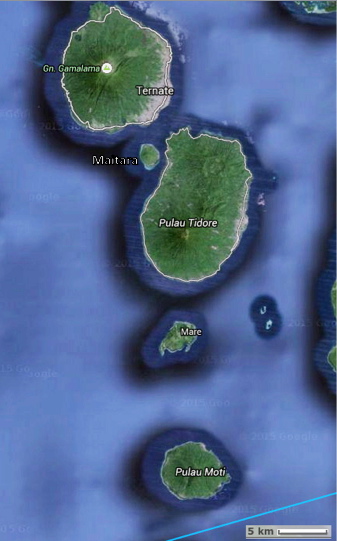 |
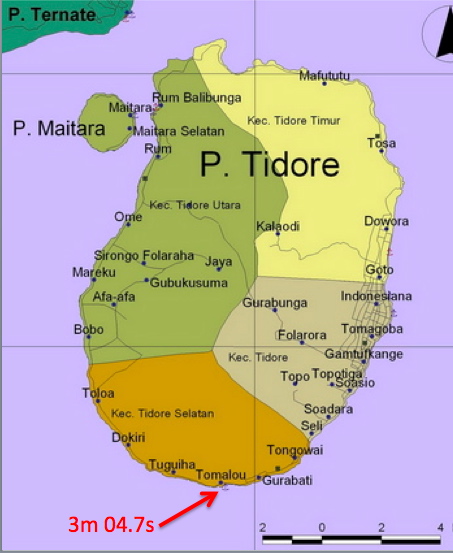 |
Ten of us left from the port on southeast Ternate by a chartered speedboat at 5 AM local time on March 9, for an appx one hour trip to Tomalou. Our eclipse observing site was directly adjacent to its boat dock by a sea wall, an excellent location we had scouted in situ on a prior day.

All was very quiet at the Tomalou
waterfront two days before the eclipse.
Our chartered speedboat is seen tied up at the end of the dock.
Our chartered speedboat is seen tied up at the end of the dock.
Most of the extremely friendly and helpful residents of this small village came out to meet and welcome us and throughout the morning shared with us the eclipse experience. The trans-cultural camaraderie and interested excitement was an added bonus to the clear-blue skies that greeted us in the direction of the Sun over the water (azimuth 97°, altitude 48° at totality).
For imaging TSE2016 I used two two cameras. The first, for high resolution imaging of the inner corona, a D810 on a Questar 3.5" telescope at its ~ 1.4 meter f/16 back focus. This telescope was on a compact but very sturdy tracking mount constructed to accommodate specifically the alt/az of the Sun for this essentially equatorial location. A second D3000 camera was used to image the mid/outer corona with a 400 mm camera lens with all refractive optics at f/6.3. The operation of both cameras was fully automated using Xavier Jubier's 'Solar Eclipse Maestro' for MacOS X on a venerable MacBook Pro 17" laptop.
Eclipse camera setup
A single integrated script was used (flexible to a range of different possible totality durations had alternate sites been needed). In each case constant cadence images at fixed exptime were taken for a 20 s before and up to C2 and from C3 and beyond. For the Questar, during totality exposures were ramped to longer exposure times from 5 ms to 2 s in appx log-normal steps and reversed from mid-eclipse to C3. Similarly for the 400 mm camera but from 2.5 ms to 5 s. A few "extra" long exposures were taken mid-way through the up and down ramps in both cameras. All exposures with the Questar f/16 were at ISO 200, and for the 400 mm f/6.3 were at ISO 800. More details will be provided at a later date. For anyone interested, CLICK HERE for the script.
On the morning of the eclipse, from our site on the south coast of Tidore, the weather could not have been more cooperative and the sky was perfectly clear toward the Sun for totality. The view was spectacular and the vista as the umbra approached (and later receded) breathtaking.
Here are, for now, just a few pictures...
TRANSITION
TO TOTALITY
Time resolved imaging flanking C2 (individual frames)
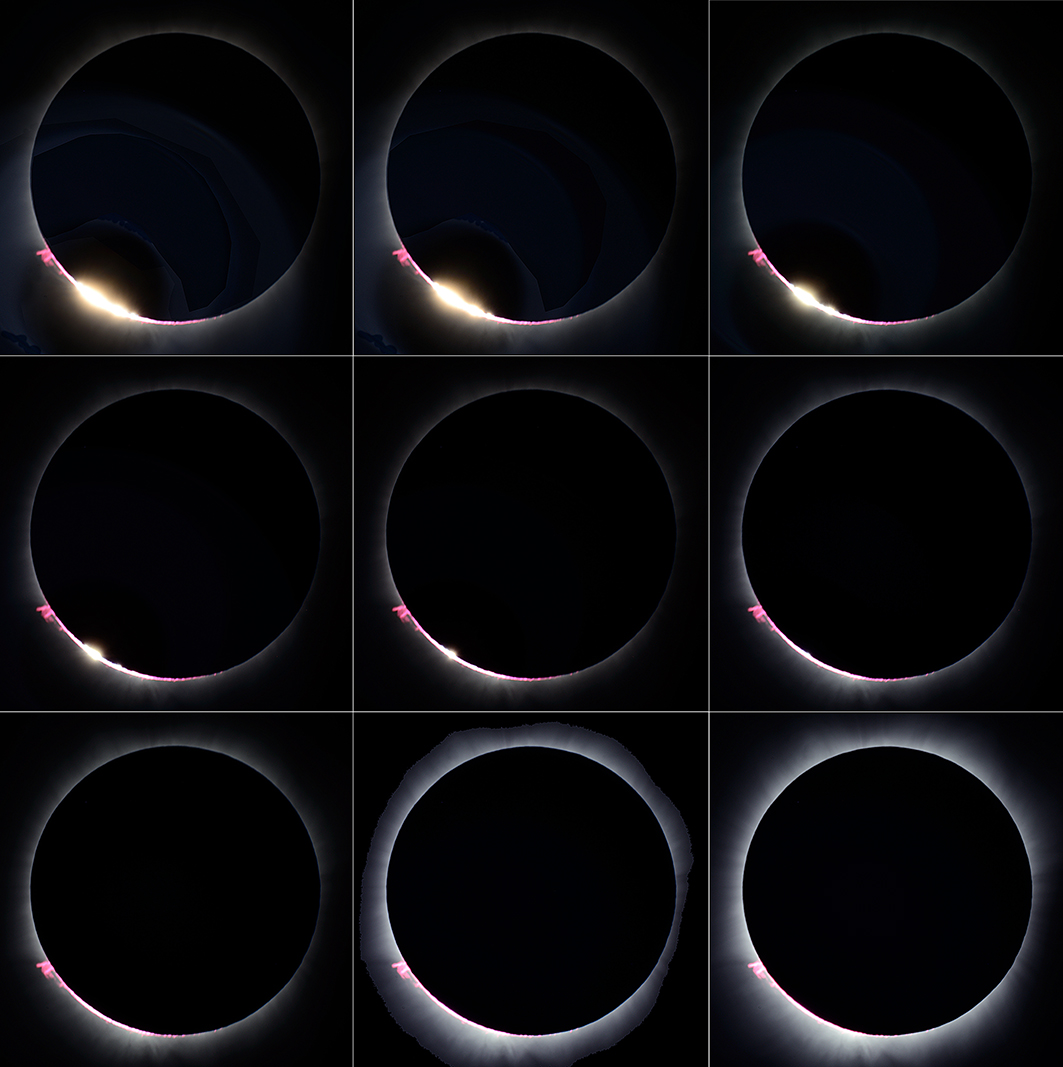
Time resolved imaging flanking C2 (individual frames)

Top 2 rows: six exposures at C2 - 5,
4, 3, 2, 1, and 0 s with 1 frame per second cadence and 1/200 s
exposure time.
Bottom row: C2 +1, +4, +5 s at 1/160, 1/80, 1/60 s exposure times.
Display images (for web presentation) down-sampled to 1/10th actual pixel sampling (10% original image scale)
CLICK HERE to see at 2X (20% of actual pixel sampling scale)
INITIAL INNER-to-OUTER CORONAL COMPOSITE
CLICK ON ANY IMAGE BELOW TO SEE AT TWICE THE SIZE
Azimuthal coronal structure from 1 R_sun to ~ 5 R_sun (400 mm EFL
camera).
From a subset (11 frames of different exposure times) acquired during the C2-to-mid-eclipse "ramp-up" exposures.
Top left: Dynamic range compression to collapse the radial median surface brightness profile.
Top right: Further radial linearization with 50° azimuthal median rotation kernel subtraction.
Bottom left: Spatial filtering to enhance mid-to-high spatial frequency coronal structure.
Bottom right: Radial linearization plus attenuated mid+high spatial filtering.
INITIAL INNER/MID CORONAL COMPOSITE
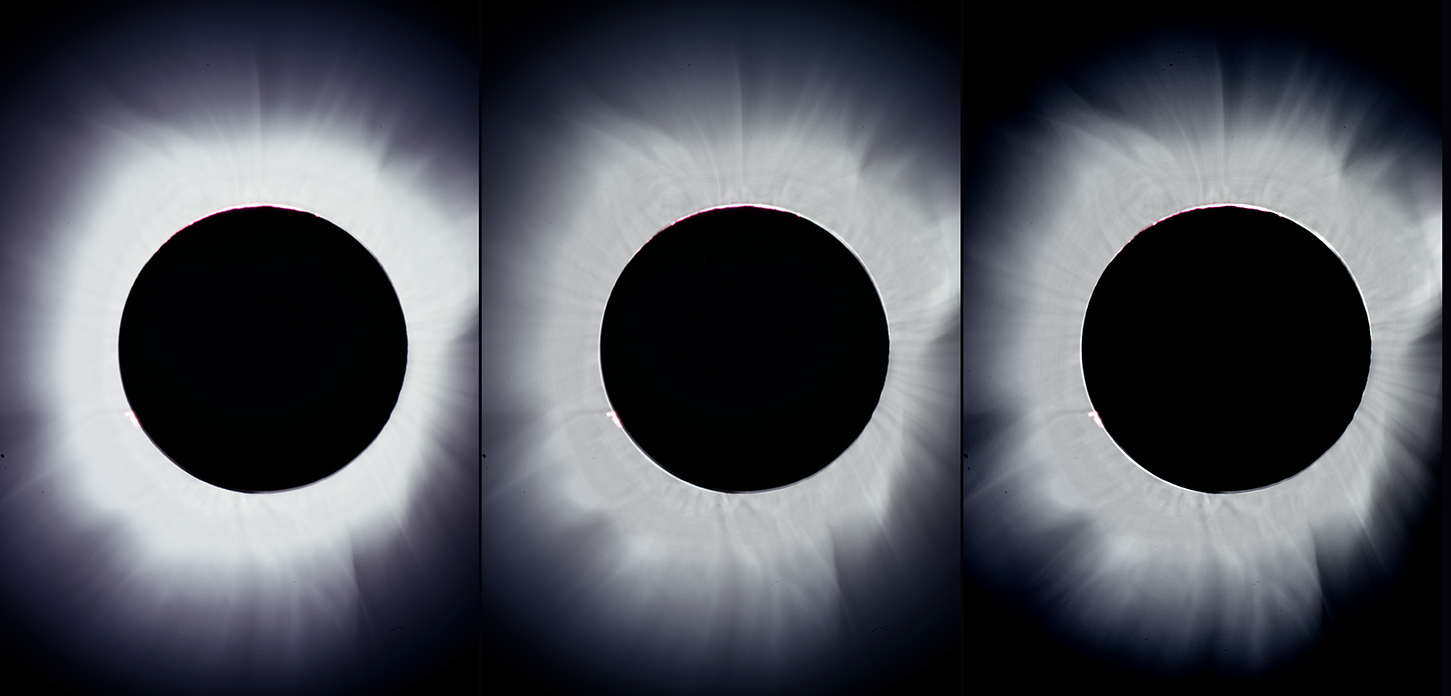
Azimuthal structure in the inner corona (1.4 m EFL camera)
From a subset (17 frames of different exposure times) acquires during the mid-eclipse-to C3 "down" ramp exposures.
Post-processed left-to-right with incrementally "aggressive" spatial filtering to enhance mid-spatial frequency coronal sub-structures.
(Preliminary processing on 8-bit per channel JPG data only, to be improved later with calibrated RAW frames).
A few NON-ECLIPSE PICTURES...

Tomalou early pre-eclipse on eclipse morning - at the water's edge.
A wonderful place with wonderful people... and a wonderful event!
Return
to Glenn Schneider's Home PageBottom row: C2 +1, +4, +5 s at 1/160, 1/80, 1/60 s exposure times.
Display images (for web presentation) down-sampled to 1/10th actual pixel sampling (10% original image scale)
CLICK HERE to see at 2X (20% of actual pixel sampling scale)
INITIAL INNER-to-OUTER CORONAL COMPOSITE
CLICK ON ANY IMAGE BELOW TO SEE AT TWICE THE SIZE
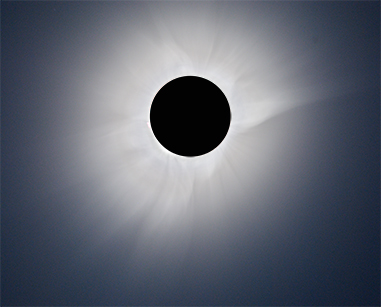 |
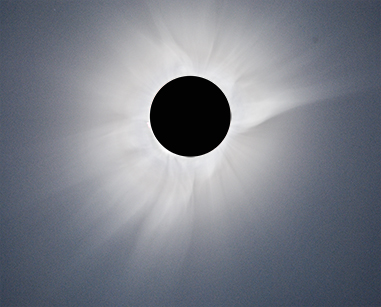 |
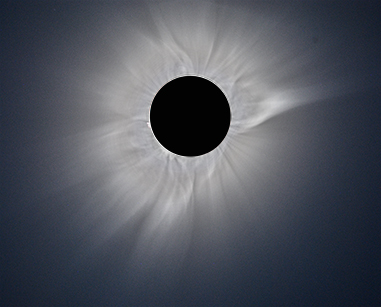 |
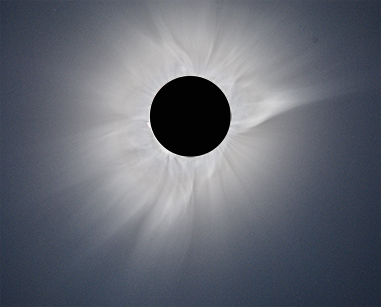 |
From a subset (11 frames of different exposure times) acquired during the C2-to-mid-eclipse "ramp-up" exposures.
Top left: Dynamic range compression to collapse the radial median surface brightness profile.
Top right: Further radial linearization with 50° azimuthal median rotation kernel subtraction.
Bottom left: Spatial filtering to enhance mid-to-high spatial frequency coronal structure.
Bottom right: Radial linearization plus attenuated mid+high spatial filtering.
INITIAL INNER/MID CORONAL COMPOSITE

Azimuthal structure in the inner corona (1.4 m EFL camera)
From a subset (17 frames of different exposure times) acquires during the mid-eclipse-to C3 "down" ramp exposures.
Post-processed left-to-right with incrementally "aggressive" spatial filtering to enhance mid-spatial frequency coronal sub-structures.
(Preliminary processing on 8-bit per channel JPG data only, to be improved later with calibrated RAW frames).
A few NON-ECLIPSE PICTURES...
Tomalou early pre-eclipse on eclipse morning - at the water's edge.
A wonderful place with wonderful people... and a wonderful event!
The last of the overnight
orthographic cloud clearing in the morning.
|
Totality minus 2.5 hours -- Set
up and ready to go
|
Sopean (eclipse shirt) &
Charles Cooper (seated), and Steve Kolodny enjoying the hospitality of
the Tomalouians
|
|
Grandpa Joel Moskowitz -- A hit
with the kids.
|
As the morning progressed more
ad more people gathered, but with room for all.
|
Glenn Schneider saying "gerhana
matahari" for the camera.
|
Keeping cool in the shade before
the eclipse starts.
|
After the big event...
Adrenaline spent, Catalin Beldea (center) looks really tired.
|
As our boat readies to leave,
saying goodbye and Terima Kasi to our new friends.
|
Meanwhile...
Though I was firmly with feet on the ground on Tidore, I also for TSE
2016 worked with Joe Rao to enable a flight opportunity for observing
this eclipse with a regular scheduled commercial flight - Alaska
Airlines flight 870. Here is the initial draft of the originating
document proposing this to Alaska Airlines. Post facto see
the Alaska
Airlines blog about this flight.